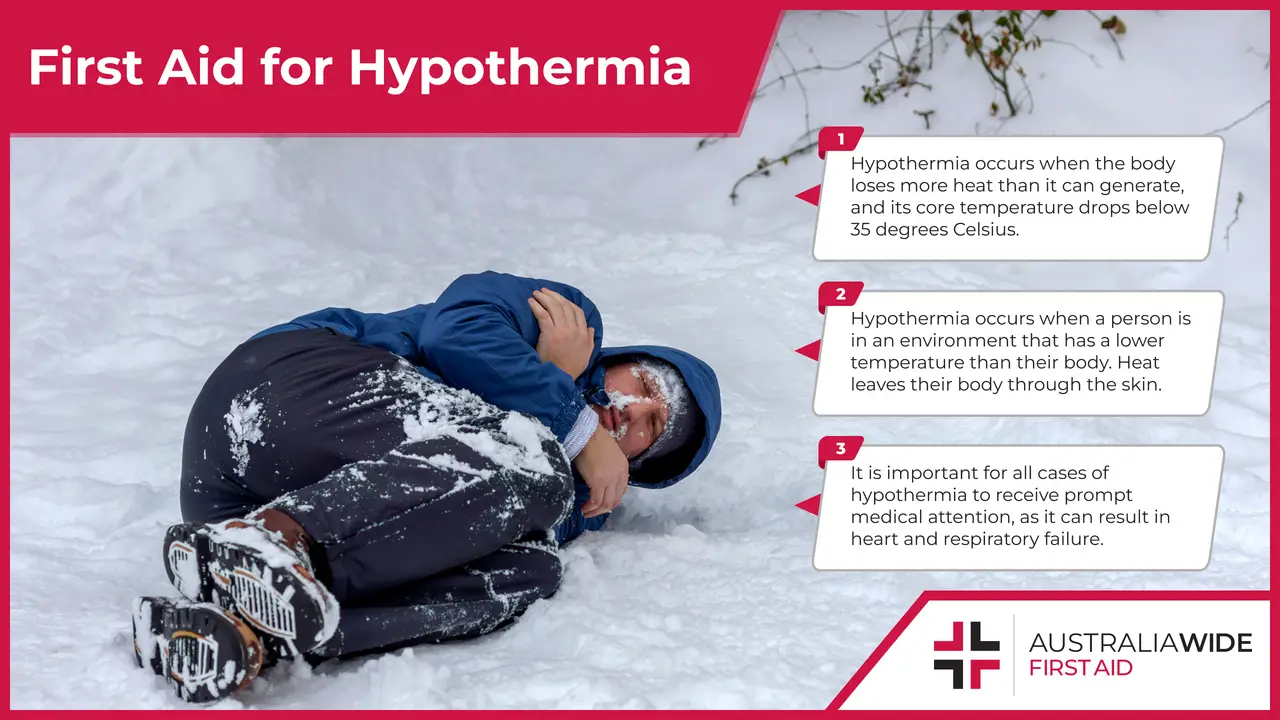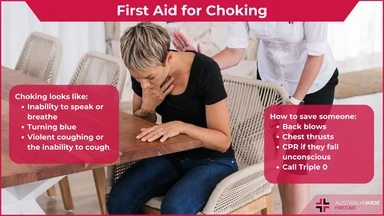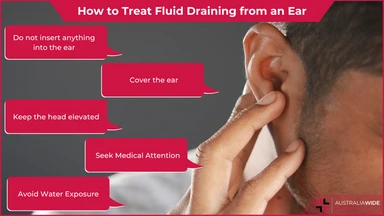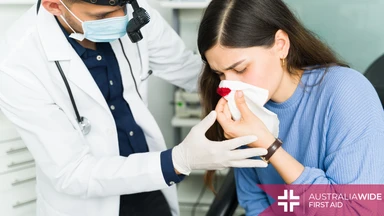Hypothermia First Aid


Hypothermia occurs when the body’s internal temperature drops below 35 degrees Celsius.
Hypothermia can occur in any situation wherein the body loses more heat than it can generate.
In saying that, hypothermia generally occurs when a person experiences prolonged exposure to cold weather conditions or cold water.
It is important to know first aid for hypothermia, as severe hypothermia can result in multiple organ failure and even death.
The average normal body temperature is generally accepted as 37 degrees Celsius. There is a range either side of this, of about half a degree, that can be perfectly normal for each individual - each of our bodies operates slightly differently, so our 'ideal' temperature might be ever so slightly different as well. Our core temperature also varies throughout the day, depending on our activities. But 37 degrees Celsius is the clinical, or medical, baseline that clinicians and doctors use as the average to determine if a person might have a fever or be too cold.
At this temperature, our body is warm enough to prevent fungal infections, but not so warm that we need to eat constantly to maintain our metabolism. This is also the temperature that our enzymes (biological catalysts that help speed up the processes within our cells) work best at.
Our body produces heat through metabolic processes in the muscles and organs, when food is broken down to support our growth, repair, and energy needs.
The hypothalamus, the part of the brain that links the endocrine and nervous systems, works alongside other parts of the body’s thermoregulation system to maintain this optimal temperature.
However, when a person is in an environment that has a lower temperature than their body, they begin losing heat through the skin via conduction, convection, radiation, and evaporation.
These processes generally occur faster in cold environments or inclement weather, as skin loses heat more quickly when exposed to wind or moisture.
As the person’s body temperature drops, the muscles and organs that produce the most heat, such as the heart and liver, cease functioning normally to preserve heat for the brain.
As such, if a person suffering from hypothermia is not given immediate medical attention, their heart and respiratory systems can falter to the point of death.
Check out the video below for more information on how to provide first aid for hypothermia:
For more information on how to prevent, identify, and manage symptoms, head to a first aid course near you.
The following first aid courses may be pertinent to you:

October 13, 2023
Choking occurs when an object or a piece of food becomes lodged in the throat, blocking the airway. The adult or child will have difficulty breathing, and may lose consciousness. Quick and effective action is essential to prevent severe consequences and death.

September 22, 2023
Knowing how to provide first aid for fluid draining from an ear is crucial to alleviate discomfort and potentially prevent complications.

July 31, 2023
This article covers treatment/first aid for nose bleeds, and also covers all of the common misconceptions and myths about treating a bleeding nose.